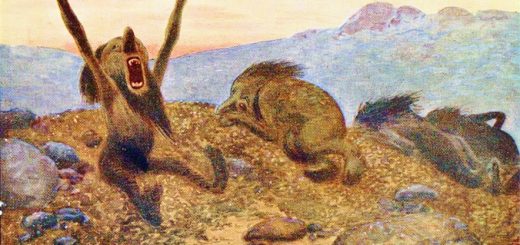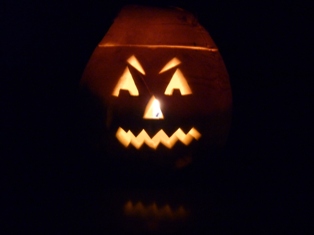Origin of the Noble Name of Trolle
Benjamin Thorpe gives this folk tale in his ‘Northern Mythology: Comprising the Principal Popular Traditions and Superstitions of Scandinavia, North Germany, and the Netherlands’ (1851) ‘On the wall of Voxtorp church in Småland there is a painting representing a knight named Herve Ulf, when one Christmas morning he received a drinking horn from a troll-wife with one hand, while with his sword he struck off her head with the other, kept the horn and rode to church. In remembrance of this deed, the king commanded him to call himself Trolle, and to take a troll without a head for his armorial bearing. Such is the origin of the noble name of Trolle.
This wonderful horn was of three hundred colours, and was first preserved in the cathedral of Wexiö; but when the Danes in 1570 burned Wexiö, the horn was carried to Denmark.
It is said that the trolls are very prolific, but that their offspring for the most part dies when it thunders; whence the saying: “Were it not for thunder, the trolls would destroy the world.”
The church at Voxtorp is also well known for a 12th century Romanesque money chest with intricate decorative ironwork. It is described in ‘From Viking to Crusader’; ‘The chest from Voxtorp belongs to a group of chests and doors with elaborate ironwork of high quality which may all have been made in the same workshop; they are preserved in east Småland and Östergotland (chests from Rydaholm, Ryssby and Voxtorp; doors from Roglösa and Voxtorp). The chest is made up of sides, ends, lid and bottom each consisting of a single plank. The pieces have been nailed together and the construction stabilized by strong iron bands decorated with a herring-bone pattern. Most of the front is covered with a hunting scene: to the left a bearded man dressed in a mitre-like head-dress grasps the tail of a deer. A snake is by the deer’s forelegs and between its legs are a dog and a hawk killing a small quadruped. Another man stands on the right, a small winged dragon at his feet. There are various interpretations of these scenes, all relating to medieval legends with hunting motifs: Giles, Eustace, Hubert or Didrik of Bern (Theodoric the Great) – who is represented here is not known. Other products of the workshop have similar motifs.” The chest is housed at the Statens Historiska Museum, Stockholm.




Recent Comments